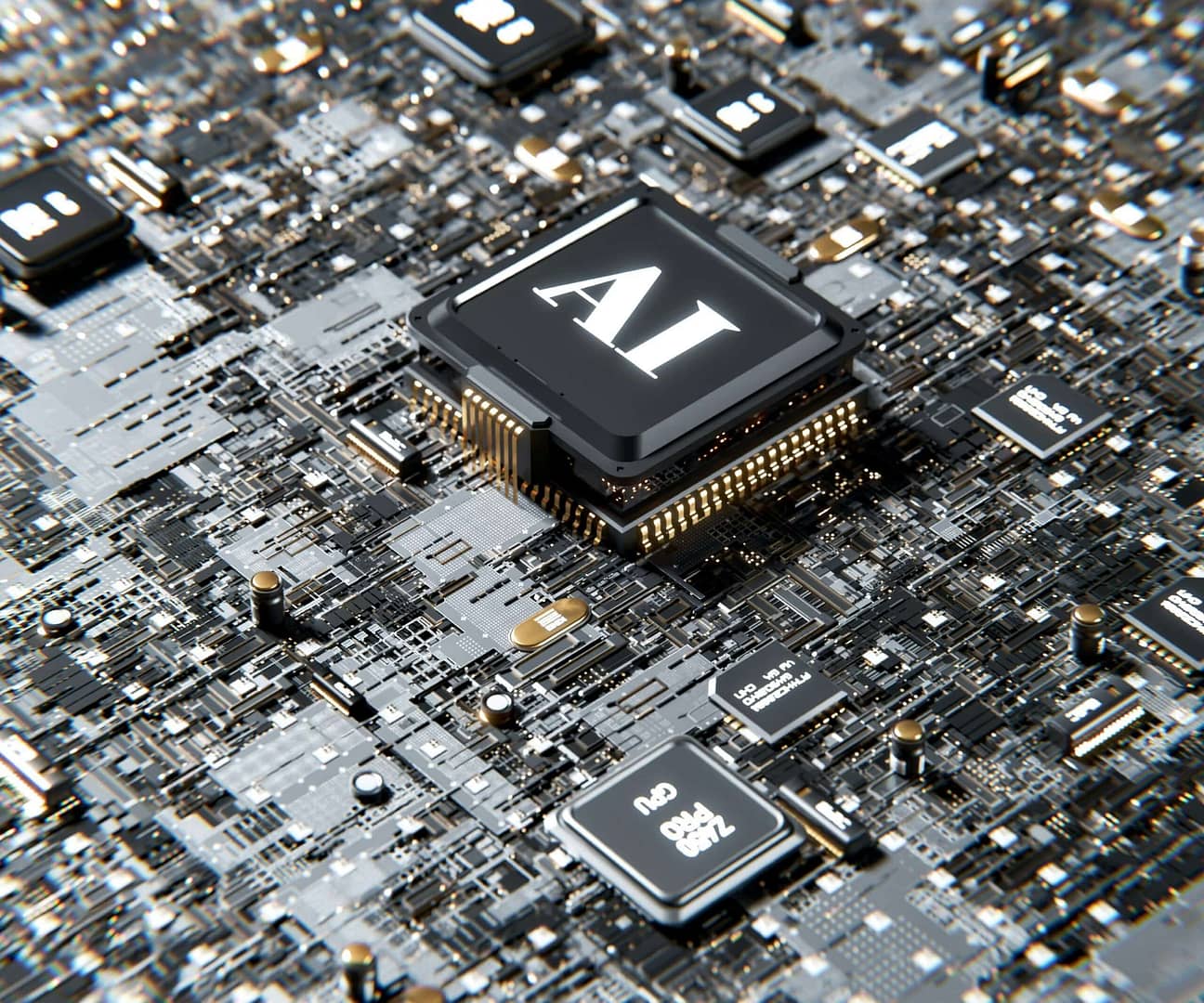AI in Operations and Its Impact on the Workforce

Table of Contents
1.1 The Accelerating Pace of AI in Operations – Setting the Stage
Artificial intelligence (AI) is no longer a futuristic concept confined to science fiction. It’s rapidly transforming industries across the globe, and operations are at the forefront of this revolution. From manufacturing and logistics to supply chain management and customer service, AI is being deployed to automate tasks, improve efficiency, and drive better decision-making. As AI adoption impact continues to accelerate, understanding its influence on the future of work becomes critical.
1.2 Beyond Automation: How AI is Reshaping Operations Workflows
While the initial focus of AI was often on automating repetitive tasks, its potential extends far beyond simple automation. AI is now being used to analyze vast amounts of data, identify patterns, predict outcomes, and optimize complex processes. This has profound implications for how operations workflows are structured and executed, moving from reactive problem-solving to proactive, data-driven optimization.
1.3 The Key Question: What New Job Roles Will Emerge from This Transformation?
The rise of AI in operations inevitably raises concerns about job displacement. However, the reality is more nuanced. While some traditional operations jobs may be automated, AI is also creating entirely new categories of work. The key question is: What new job roles will emerge from this transformation? The future of operations workforce hinges on our ability to adapt and embrace these changes.
1.4 Blog Post Roadmap: Previewing the 5 Emerging Roles We’ll Explore
In this blog post, we’ll delve into five of the most exciting and promising new job roles emerging from AI adoption in operations. We will explore the core responsibilities, necessary skills, and potential impact of each role, giving you a glimpse into the AI operations careers of tomorrow. We’ll also discuss the importance of upskilling for AI jobs to prepare the workforce for these new opportunities. Be sure to check out my [blog](https://shubhamnayak.com/blog) for more insights!
II. Understanding the Shift: Why AI is Creating New Roles, Not Just Replacing Old Ones

2.1 The Complementary Nature of AI and Human Skills in Operations
The most effective approach to AI in operations isn’t about replacing humans, but about augmenting their capabilities. AI excels at processing data and performing repetitive tasks, while humans bring creativity, critical thinking, emotional intelligence, and contextual understanding to the table. The complementary nature of these skill sets is crucial for unlocking the full potential of AI in operations. This is a perspective also highlighted by McKinsey’s research.
2.2 The Need for Humans to Manage, Interpret, and Optimize AI Systems
AI systems don’t operate in a vacuum. They require human oversight to ensure they are functioning correctly, performing ethically, and aligned with business goals. Humans are needed to manage AI algorithms, interpret their outputs, and optimize their performance over time. This management and optimization necessitates emerging AI roles.
2.3 Data-Driven Decision Making: A Core Skill Requiring Human Expertise
AI provides valuable insights through data analysis, but it’s ultimately up to humans to interpret those insights and make informed decisions. This requires a deep understanding of the business context, critical thinking skills, and the ability to communicate complex information effectively. The emphasis on data-driven decision-making emphasizes the importance of people in AI-driven operations roles.
2.4 The Evolution of Operations Tasks: From Repetitive to Strategic
As AI takes over repetitive tasks, human workers can focus on more strategic and creative activities. This shift allows for greater innovation, improved problem-solving, and a more engaging work experience. It elevates operations roles beyond simple task execution to more complex problem-solving and strategy.
III. Emerging Role #1: AI Operations Strategist – Designing the AI-Powered Future

3.1 Role Definition: Defining the strategic vision for AI adoption in operations
The AI Operations Strategist is responsible for developing and executing the overall strategy for AI adoption in operations. This includes identifying opportunities to leverage AI, defining clear objectives, and aligning AI initiatives with business goals.
3.2 Key Responsibilities:
3.2.1 Identifying and Prioritizing AI Use Cases
The strategist must be able to identify areas within operations where AI can have the greatest impact, evaluating potential use cases based on feasibility, cost, and potential return on investment.
3.2.2 Developing AI Implementation Roadmaps
Creating detailed roadmaps for AI implementation, outlining specific steps, timelines, and resources needed to successfully deploy AI solutions.
3.2.3 Aligning AI Strategies with Business Goals
Ensuring that all AI initiatives are aligned with the overall business strategy and contributing to key performance indicators (KPIs).
3.3 Required Skills: Strategic thinking, business acumen, understanding of AI capabilities, project management, stakeholder management
This role requires a strong understanding of both business strategy and AI technology. The strategist must be able to communicate effectively with both technical and non-technical stakeholders, build consensus, and drive adoption.
3.4 Example Use Case: Optimizing supply chain operations using AI for predictive analytics
An AI Operations Strategist might lead an initiative to use AI-powered predictive analytics to optimize supply chain operations. This could involve using AI to forecast demand, predict potential disruptions, and optimize inventory levels.
IV. Emerging Role #2: AI Operations Trainer & Auditor – Ensuring Performance and Ethical Use

4.1 Role Definition: Training AI models and auditing their performance and fairness
The AI Operations Trainer & Auditor is responsible for ensuring that AI models are accurate, reliable, and ethical. This involves training AI models with high-quality data, evaluating their performance, and identifying and mitigating biases.
4.2 Key Responsibilities:
4.2.1 Developing and Curating Training Data for AI Models
Creating and curating datasets that are representative of the real-world scenarios in which the AI model will be used.
4.2.2 Evaluating AI Model Performance and Identifying Biases
Using statistical methods and domain expertise to evaluate the performance of AI models and identify potential biases that could lead to unfair or discriminatory outcomes.
4.2.3 Ensuring Ethical and Responsible Use of AI in Operations
Developing and implementing policies and procedures to ensure that AI is used ethically and responsibly in operations.
4.2.4 Providing Feedback to AI Developers for Model Improvement
Providing feedback to AI developers on how to improve the performance and fairness of AI models.
4.3 Required Skills: Data analysis, machine learning fundamentals, understanding of ethical AI principles, critical thinking, communication skills
This role requires a strong understanding of data analysis, machine learning, and ethical AI principles. The auditor must be able to critically evaluate AI models, identify potential biases, and communicate their findings effectively.
4.4 Example Use Case: Auditing an AI-powered recruitment system for bias.
An AI Operations Trainer & Auditor might be responsible for auditing an AI-powered recruitment system to ensure that it is not biased against any particular group of candidates.
V. Emerging Role #3: AI Workflow Integrator – Connecting AI and Human Processes
5.1 Role Definition: Bridging the gap between AI-driven systems and human workflows.
The AI Workflow Integrator is responsible for designing and implementing systems that seamlessly integrate AI-driven processes with existing human workflows. This involves understanding both the technical capabilities of AI and the operational needs of the business.
5.2 Key Responsibilities:
5.2.1 Designing and Implementing AI-Human Collaboration Systems
Creating systems that enable humans and AI to work together effectively, leveraging the strengths of both.
5.2.2 Streamlining Data Flow Between AI and Human Operators
Ensuring that data flows smoothly between AI systems and human operators, enabling them to make informed decisions.
5.2.3 Developing User Interfaces for AI-Powered Tools
Creating user-friendly interfaces for AI-powered tools, making them accessible to a wide range of users.
5.2.4 Ensuring Seamless Integration with Existing Systems
Integrating AI systems with existing IT infrastructure and business processes.
5.3 Required Skills: Process optimization, workflow design, understanding of AI integration techniques, communication skills, project management
This role requires a strong understanding of process optimization, workflow design, and AI integration techniques. The integrator must be able to communicate effectively with both technical and non-technical stakeholders, build consensus, and manage projects effectively.
5.4 Example Use Case: Integrating AI-powered quality control with human inspection processes on a manufacturing line.
An AI Workflow Integrator might be responsible for integrating an AI-powered quality control system with the existing human inspection processes on a manufacturing line. This could involve designing a system that automatically flags potential defects for human inspectors to review.
VI. Emerging Role #4: AI Operations Data Scientist – Unlocking Insights from AI-Generated Data
6.1 Role Definition: Analyzing data generated by AI systems to identify patterns and improve operations
The AI Operations Data Scientist is responsible for analyzing the vast amounts of data generated by AI systems in operations to identify patterns, trends, and insights that can be used to improve performance.
6.2 Key Responsibilities:
6.2.1 Developing Data Analysis Strategies for AI-Driven Operations
Creating data analysis strategies that are tailored to the specific needs of AI-driven operations.
6.2.2 Building Data Visualizations to Communicate Insights
Developing data visualizations that effectively communicate insights to stakeholders.
6.2.3 Identifying Opportunities for Process Optimization Based on Data Analysis
Using data analysis to identify opportunities to optimize processes and improve efficiency.
6.2.4 Creating Predictive Models to Improve Operations Performance
Building predictive models that can be used to forecast demand, predict equipment failures, and optimize resource allocation.
6.3 Required Skills: Data science, statistical analysis, machine learning, data visualization, communication skills, domain knowledge in operations.
This role requires a strong background in data science, statistical analysis, and machine learning. The data scientist must be able to communicate their findings effectively to both technical and non-technical stakeholders.
6.4 Example Use Case: Using AI-generated data to optimize inventory management and reduce waste.
An AI Operations Data Scientist might use AI-generated data to optimize inventory management, predict demand fluctuations, and minimize waste.
VII. Emerging Role #5: AI Operations Support Specialist – Maintaining and Troubleshooting AI Systems
7.1 Role Definition: Providing technical support for AI systems used in operations.
The AI Operations Support Specialist is responsible for providing technical support for AI systems used in operations, ensuring that they are running smoothly and efficiently.
7.2 Key Responsibilities:
7.2.1 Monitoring AI System Performance and Identifying Issues
Monitoring the performance of AI systems and identifying potential issues before they become major problems.
7.2.2 Troubleshooting Technical Problems with AI Systems
Troubleshooting technical problems with AI systems, such as software bugs, hardware failures, and network connectivity issues.
7.2.3 Providing Support to Users of AI-Powered Tools
Providing support to users of AI-powered tools, answering their questions, and helping them to use the tools effectively.
7.2.4 Documenting AI System Configurations and Maintenance Procedures
Documenting AI system configurations and maintenance procedures, ensuring that the systems can be easily maintained and upgraded.
7.3 Required Skills: Technical troubleshooting, understanding of AI infrastructure, communication skills, problem-solving, customer service
This role requires strong technical troubleshooting skills, a good understanding of AI infrastructure, and excellent communication skills. The support specialist must be able to communicate effectively with both technical and non-technical users.
7.4 Example Use Case: Providing support for an AI-powered chatbot used for customer service in a call center.
An AI Operations Support Specialist might be responsible for providing support for an AI-powered chatbot used for customer service in a call center, troubleshooting technical problems, and answering user questions.
VIII. Upskilling for the Future: Preparing the Workforce for AI-Driven Operations

8.1 Identifying the Skills Gap: What Skills are Needed for These New Roles?
The emerging roles discussed above require a blend of technical skills, business acumen, and soft skills. Identifying the skills gap is crucial for preparing the workforce for AI-driven operations. We must understand which skills are lacking and develop strategies to address those gaps. Key skills include:
- Data analysis and interpretation
- Machine learning fundamentals
- AI ethics and governance
- Process optimization
- Workflow design
- Communication and collaboration
- Critical thinking and problem-solving
8.2 Strategies for Upskilling and Reskilling Existing Operations Staff
Upskilling for AI jobs and reskilling existing operations staff are essential for a smooth transition to AI-driven operations. Strategies include:
- Internal training programs: Offering training programs to employees to develop the necessary skills.
- Online courses and certifications: Encouraging employees to take online courses and certifications in relevant areas.
- Mentorship programs: Pairing experienced employees with those who are new to AI to provide guidance and support.
- Partnerships with educational institutions: Collaborating with universities and colleges to offer specialized training programs.
8.3 The Role of Education and Training Providers
Education and training providers play a vital role in preparing the workforce for AI-driven operations. They need to develop curricula that are aligned with the needs of the industry and that provide students with the skills and knowledge they need to succeed.
8.4 Investing in a Future-Ready Workforce
Investing in a future-ready workforce is essential for organizations to remain competitive in the age of AI. This includes investing in training programs, providing employees with opportunities to learn and grow, and creating a culture of continuous learning. I am passionate about providing valuable insights for professionals like you – check out my [About Me](https://shubhamnayak.com/about) page. Thinking about switching jobs? Try my [Real-time-salary-calulator](https://shubhamnayak.com/real-time-salary-calculator/).
IX. Conclusion: Embracing the Change and Building a Successful Future of Work in Operations
9.1 Recap of the 5 Emerging Roles
We’ve explored five exciting emerging roles in AI-driven operations:
- AI Operations Strategist
- AI Operations Trainer & Auditor
- AI Workflow Integrator
- AI Operations Data Scientist
- AI Operations Support Specialist
These roles highlight the transformative potential of AI and the new opportunities it creates for the workforce.
9.2 The Importance of a Proactive Approach to AI Adoption
A proactive approach to AI adoption is crucial for success. Organizations need to develop a clear strategy, invest in the right skills, and create a culture of continuous learning. McKinsey shares similar sentiments on approaching the future of work with a proactive mindset.
9.3 The Opportunity to Create a More Efficient and Engaging Operations Workforce
AI offers the opportunity to create a more efficient and engaging operations workforce. By automating repetitive tasks, AI frees up human workers to focus on more strategic and creative activities, leading to greater job satisfaction and improved performance.
9.4 Final Thoughts: The Future of Operations is Here – Are You Ready?
The future of operations is here. Are you ready to embrace the change and build a successful future of work? Visit my [home](https://shubhamnayak.com/) for more articles and resources.
X. Resources:
- Downloadable Resource: Download a free checklist: “Preparing Your Operations Team for AI Adoption”
- Share your thoughts and experiences in the comments section below. What are your biggest concerns or excitements about AI in operations?
- Check out my other blog posts on related topics, such as “The Impact of AI on Supply Chain Management” and “How to Build a Data-Driven Culture in Your Organization” at [blog](https://shubhamnayak.com/blog).
Be sure to subscribe to my [newsletter](https://shubhamnayak.com/newsletter/) for the latest insights and updates on the future of work. And don’t hesitate to [contact](https://shubhamnayak.com/contact/) me with any questions or comments.
Pingback: How Change Management Has Evolved in a Remote First, AI-Driven World in 2025?